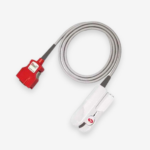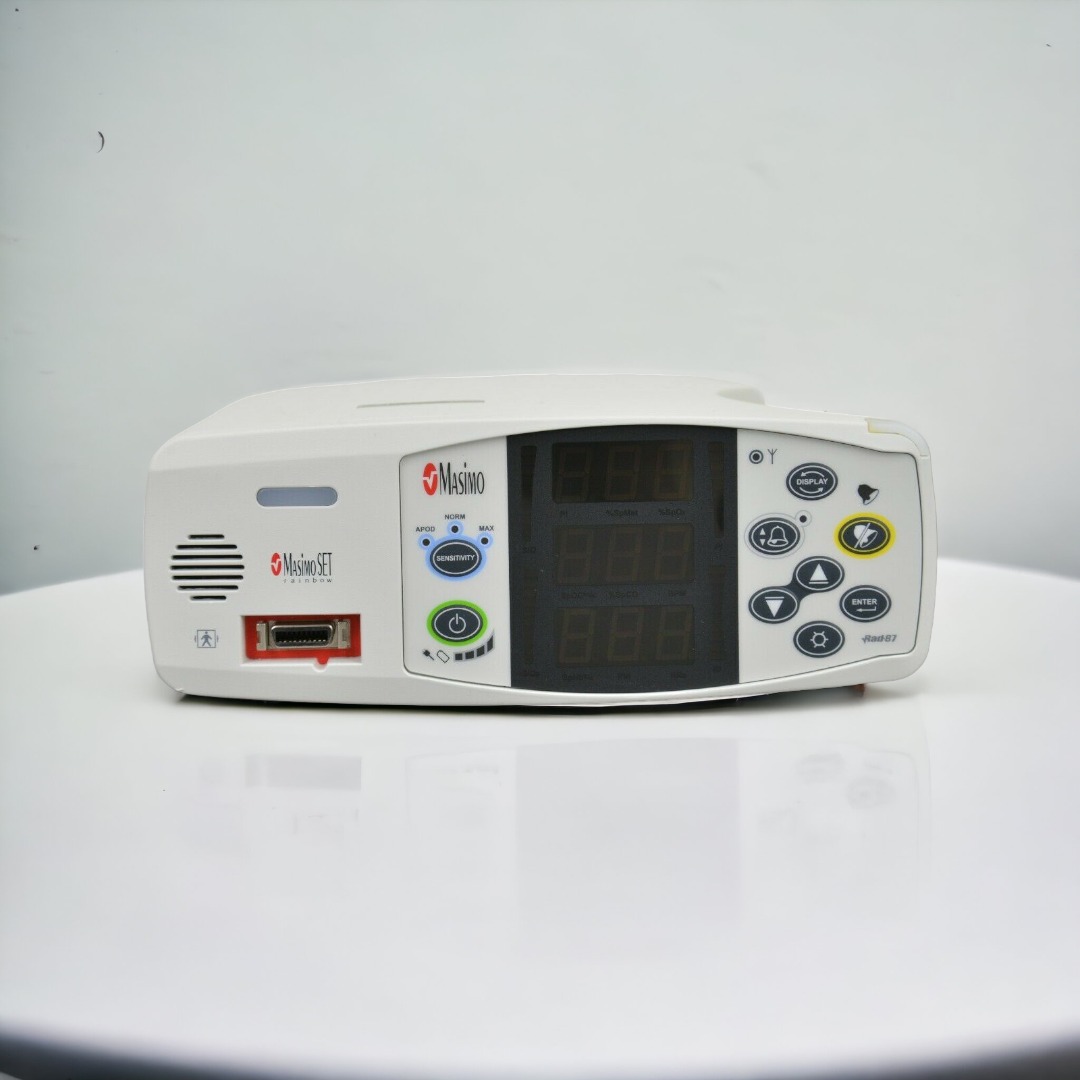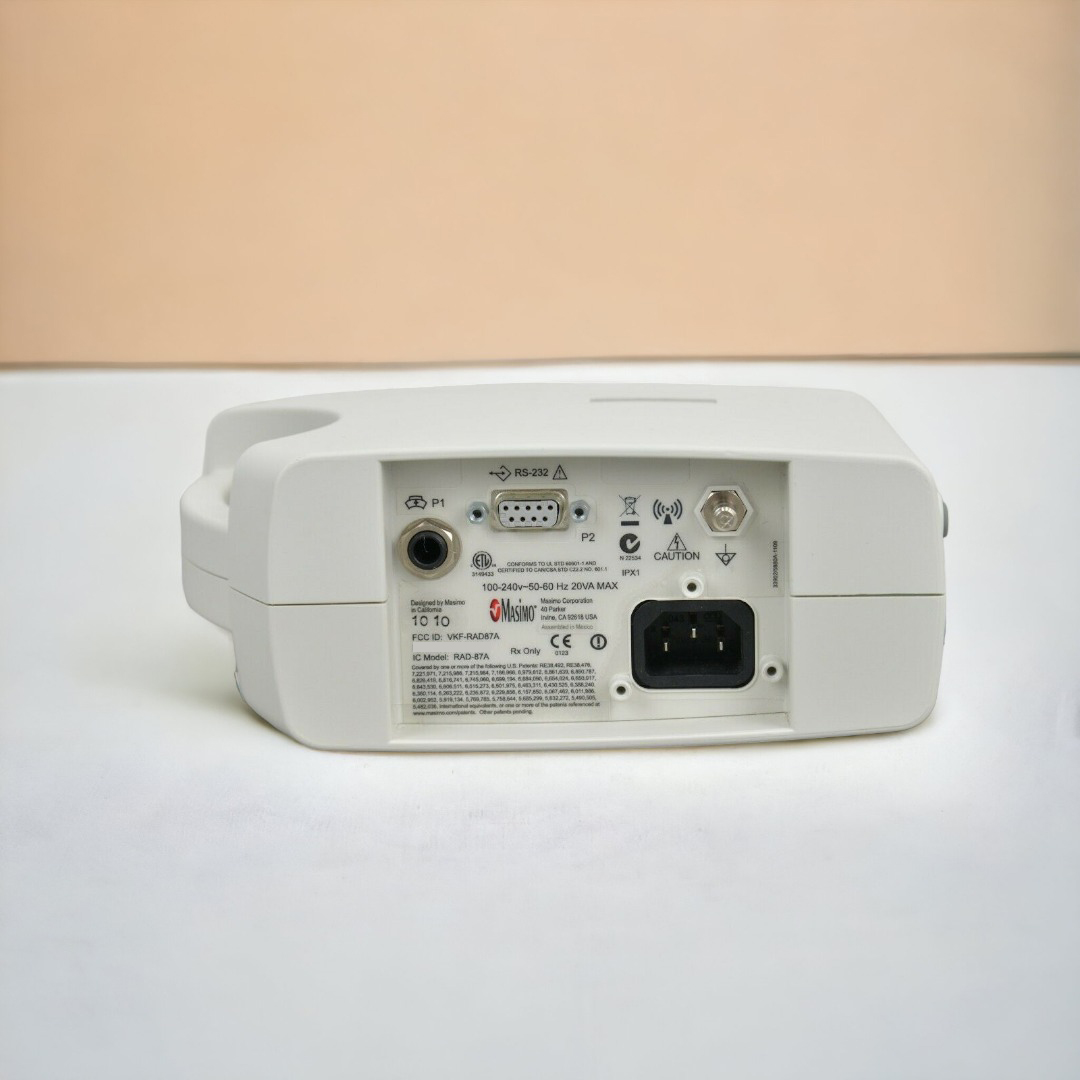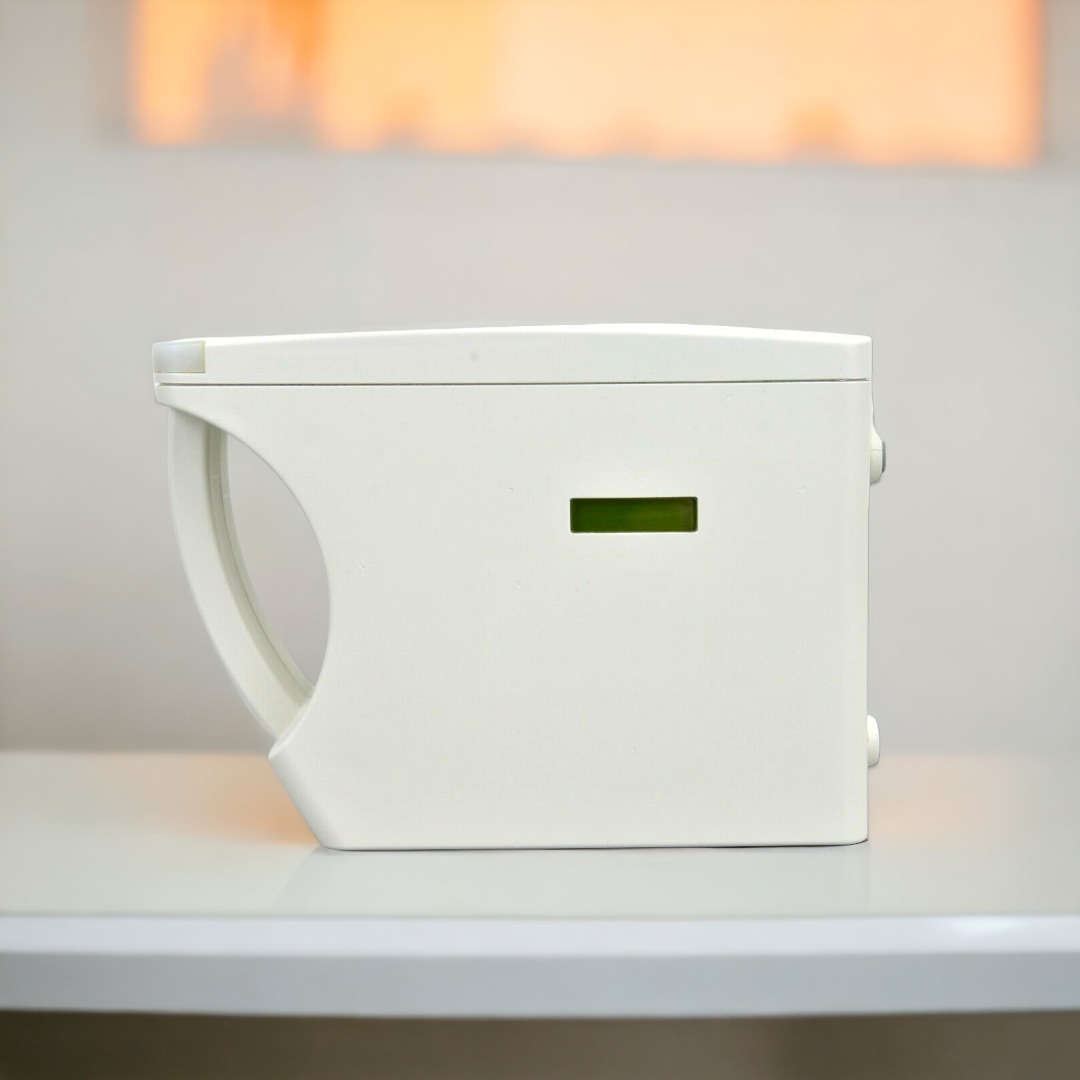Description

Its Purpose:
The Masimo Rad-87 Pulse Oximeter is a medical device designed to measure a patient’s oxygen saturation (SpO2) and pulse rate. It is manufactured by Masimo Corporation, a company specializing in noninvasive monitoring technologies. The Rad-87 Pulse Oximeter utilizes Masimo’s innovative Signal Extraction Technology (SET) to provide accurate and reliable measurements, even under challenging conditions such as motion, low perfusion, or ambient light interference. This technology helps healthcare professionals make informed decisions by delivering precise readings in real-time.
Acme’s Summary:
It’s important to note that medical devices may evolve over time, and new models or features may become available. Therefore, it’s always advisable to refer to the latest product information and consult with healthcare professionals or the manufacturer for specific details regarding the Masimo Rad-87 Pulse Oximeter.
Top 3 Competitors
- Nellcor Oximax/SpO2
- Philips IntelliVue Pulse Oximeters
- Nonin Medical Pulse Oximeters
5 Best Things:
- SpO2 Monitoring: The device measures the patient’s oxygen saturation, which indicates the percentage of hemoglobin in the blood that is saturated with oxygen. It offers continuous monitoring, allowing healthcare providers to track changes in oxygen levels over time.
- Pulse Rate Measurement: The Rad-87 also measures the patient’s pulse rate, providing information about the number of heartbeats per minute. This data is essential for assessing a patient’s cardiovascular status.
- Plethysmographic Waveform: The device displays a plethysmographic waveform, a visual representation of the arterial blood flow. This waveform assists healthcare professionals in assessing the quality of the signal and the patient’s perfusion.
- Alarm System: The Rad-87 features customizable alarm settings to alert healthcare providers of significant changes in oxygen saturation or pulse rate. These alarms help ensure prompt intervention when a patient’s vital signs deviate from the desired range.
- Connectivity and Data Management: The device can be integrated into hospital networks or electronic medical record (EMR) systems, allowing for seamless data transfer and storage. It enables healthcare professionals to review and analyze patient data for better management and documentation.
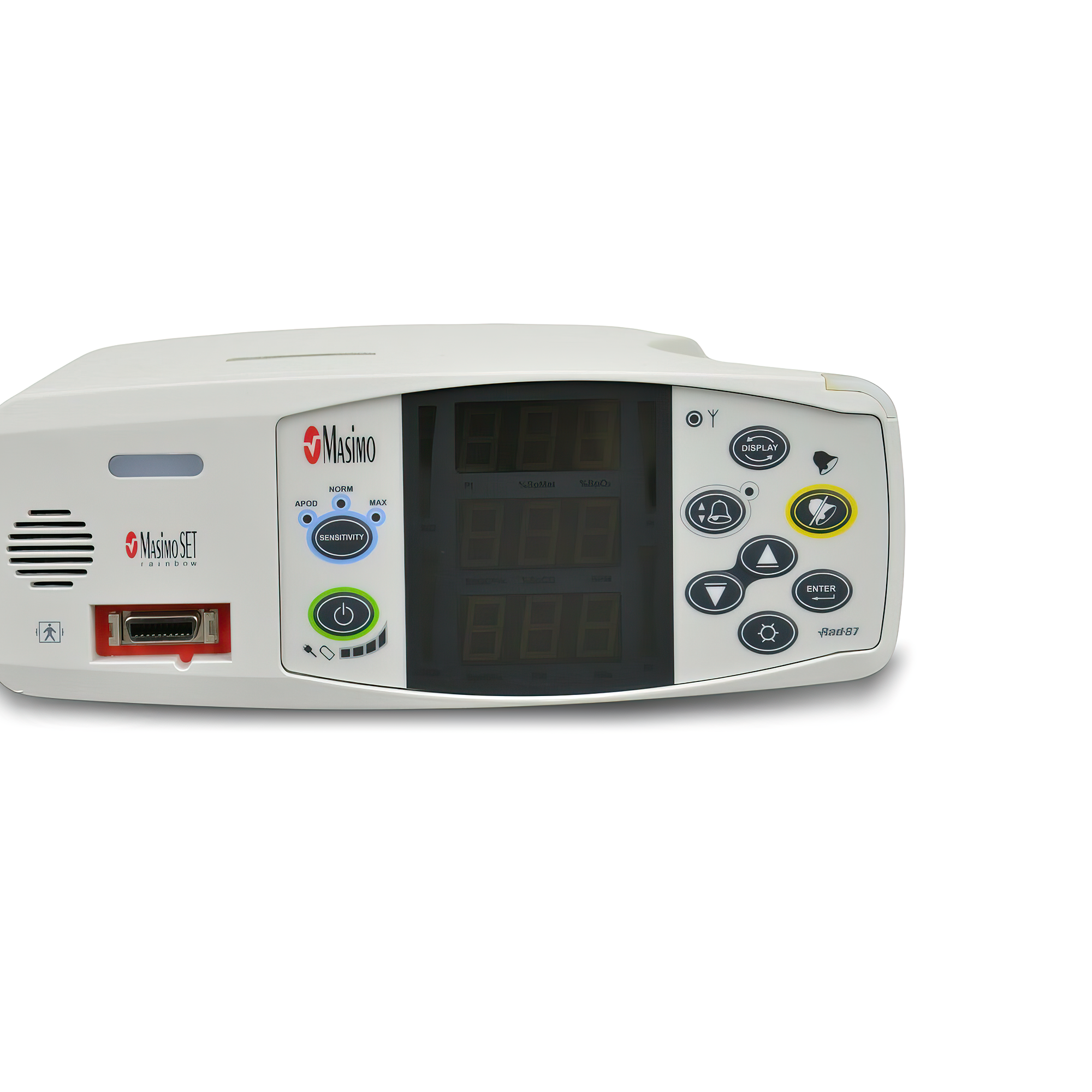
 (4)
(4)